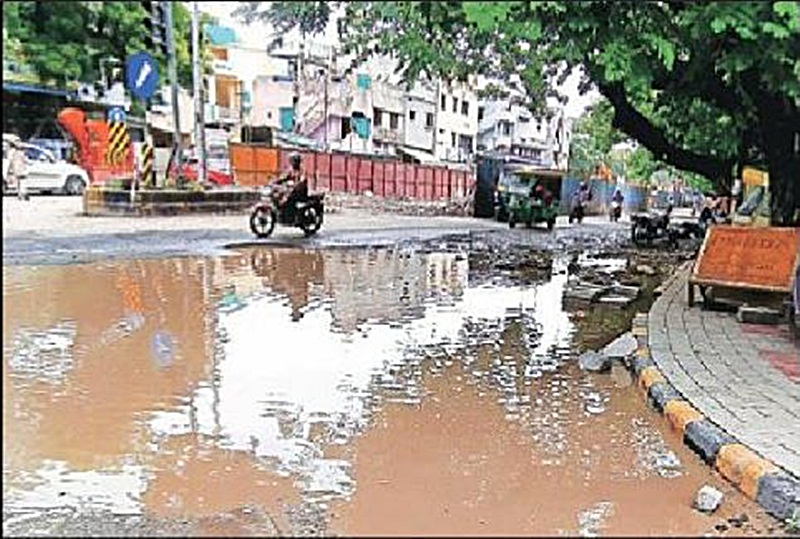In a forward-thinking move blending infrastructure with sustainability, the Nagpur Municipal Corporation (NMC) is transforming the city’s cement roads into rainwater harvesting hubs. As part of its Phase-IV Cement Road Development Project, the civic body has begun embedding groundwater recharge pits alongside major roads, aiming to tackle urban flooding and reverse declining water tables.
The project is already in motion. Eleven recharge pits have been completed on Cement Roads 3 and 4 in Khamla (Package 2), while five more sites have been identified near the newly developed cement road in front of Dhantoli Garden. Work is also underway in Ashi Nagar zone, where similar systems are being integrated into new roads.
Each pit consists of a 300 mm diameter bore drilled 20 meters deep, connected to a chamber fitted with downward-facing pipes. These pits are filled with layers of sand, charcoal, and gravel, forming a natural filtration system that cleans and channels rainwater underground.
What sets this system apart is its direct linkage to RCC roadside and stormwater drains. Rather than letting rainwater escape the area, the drains now guide it into the recharge pits—addressing both flood control and groundwater recharge in one go.
To ensure efficiency, the pits are topped with iron grates and come with a 10-year maintenance commitment from contractor M/s R M Dayaramani.
With 147 pits planned across 33 roads covering over 23 kilometers, Nagpur is setting a strong example of climate-resilient urban planning—where roads don’t just connect, they conserve.
👉 Click here to read the latest Gujarat news on TheLiveAhmedabad.com





